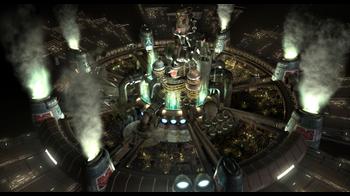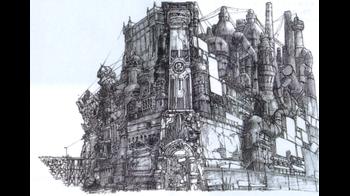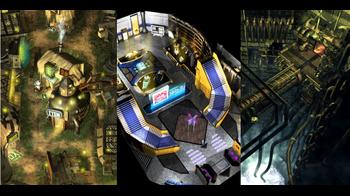
Spotlight: Midgar
Spotlight is a regular feature where the RPG Site team highlight and examine locations, characters, systems and features of RPGs that deserve retrospective recognition.
When I first pitched Spotlight to the team, I knew precisely where I wanted to start. The answer is obvious - one of the most iconic locations in all of RPG history, one the game sees fit to thrust in front of the player within a minute of pressing 'New Game', as so many did eighteen years ago to the day from this article's publishing date - Final Fantasy VII's sprawling dystopia, Midgar.
Midgar is a pretty large place, and in truth is probably a good deal larger than I actually envisioned for this feature. For a while I agonized: Wouldn't a better pick be an individual location within it such as the seedy Wall Market, the haven of the Sector 5 Church, or the impressive Shinra Headquarters? All of those could fit this feature, it's true, but part of what makes Midgar special is its size.
The team at Squaresoft made a rather bold choice in restricting the player to the city of Midgar for a significant chunk of the game's first act. I, like many, was floored when Cloud & company skidded to a halt at the edge of Midgar's highway, the world beyond visible on the horizon. My reaction: You mean this isn't the whole game?
So impressive is it in size and scope that it very well could've been. The time you spend in Midgar is longer than some entire games, and while FF7's story unfurls into a more complicated web once you leave its borders, entire story arcs open and close in your time there. It's a small story and game in itself, and a damn competent one.
Midgar remains a master class in pacing in both in narrative and gameplay terms, mechanics introduced in a satisfying drip feed as the story propels you along with plenty of time for exploration.
In an age when recent Final Fantasy titles have done away with the World Map, Midgar is a lesson in how to handle that also. Despite the fact that Midgar is ultimately an entirely linear experience, it never feels as such, with optional quests, areas and exploration plentiful across its lusciously rendered CG backdrops.
While it first draws you in with its pulsing green lighting and curved, futuristic architecture, a darker truth is soon revealed: Midgar is a police state featuring a bizarre juxtaposition between heavily industrial steampunk-looking infrastructure and an affluent world of cobbled streets, billboards and huge offices.
Motor vehicles trundle around, and even in the wake of your terrorist attack the city seems strangely inviting. We never see much of the world above - a few streets and the gigantic Shinra Headquarters are all there's time for. In spite of that, the picture painted of what Midgar's two disparate worlds are is painted perfectly. The upper city, with its neon lighting and stylish offices, is a place that one wouldn't be blamed for admiring - making the truth of what sacrifices have been made to facilitate that lifestyle all the more effective.
The influence of a lengthy and iterative development process helps to make the city as compelling as it is. Shades of a near-future 1999 New York, FF7's original setting, is obvious above the 'pizza' plates that separate the upper world from the slums below.
Later concepts envisioned the city as a haphazardly built structure floating in the sky, the planet below damaged to the point where the wealthy no longer wished to live on its surface. How this became the elevated, affluent city atop the sector plates is plain.
FF7's opening casts you as rebels fighting the power but it's only once you clamber below the plate that what you're actually fighting for becomes clear. It's a brilliant revelation so early in the game: Below isn't just a world of the oppressed, but a world without care.
Wall Market excellently demonstrates how far people without the luxuries offered by Shinra above the plate will go, and though FF7 steers clear of being too plain about the kind of things that happen to the vulnerable in the slums, players can easily imagine.
By the time you actually leave the city you're all the more aware of the cost of Shinra's technological utopia, human and otherwise. The stakes in the battle against Shinra are clear, and the script doesn't have to manipulate hard to make you sympathize with AVALANCHE, a group who take innocent lives with their freedom fighting. The setting takes care of that with glee.
Even as you leave there's a parting message: the ground around Midgar on the world map is stained black, nature scorched from around the city by Shinra's actions.
Somewhere in there, there's a message to us, too, some of AVALANCHE's world view certainly applicable to a world of global warming and melting ice caps.
While FF7 isn't really a game about a magical form of global warming - that's window dressing to the larger story of extraterrestrial life and the dangers of playing god - one could easily be confused that it is. That's largely thanks to Midgar. Its presence dominates for the following two discs, and the journey you take there is arguably the most compelling of the entire game, even in the face of a subsequent adventure packed with intriguing, clever, first-of-its-kind moments.
Without Midgar as the perfect introduction to the world of Final Fantasy, the series may never have found the break-out success it did. Explosive at the outset, but then slowing down with plenty of time for introspective character moments, exploration and battle experimentation, it in many ways represents the very best qualities Final Fantasy VII - and the series as a whole - has attained.



